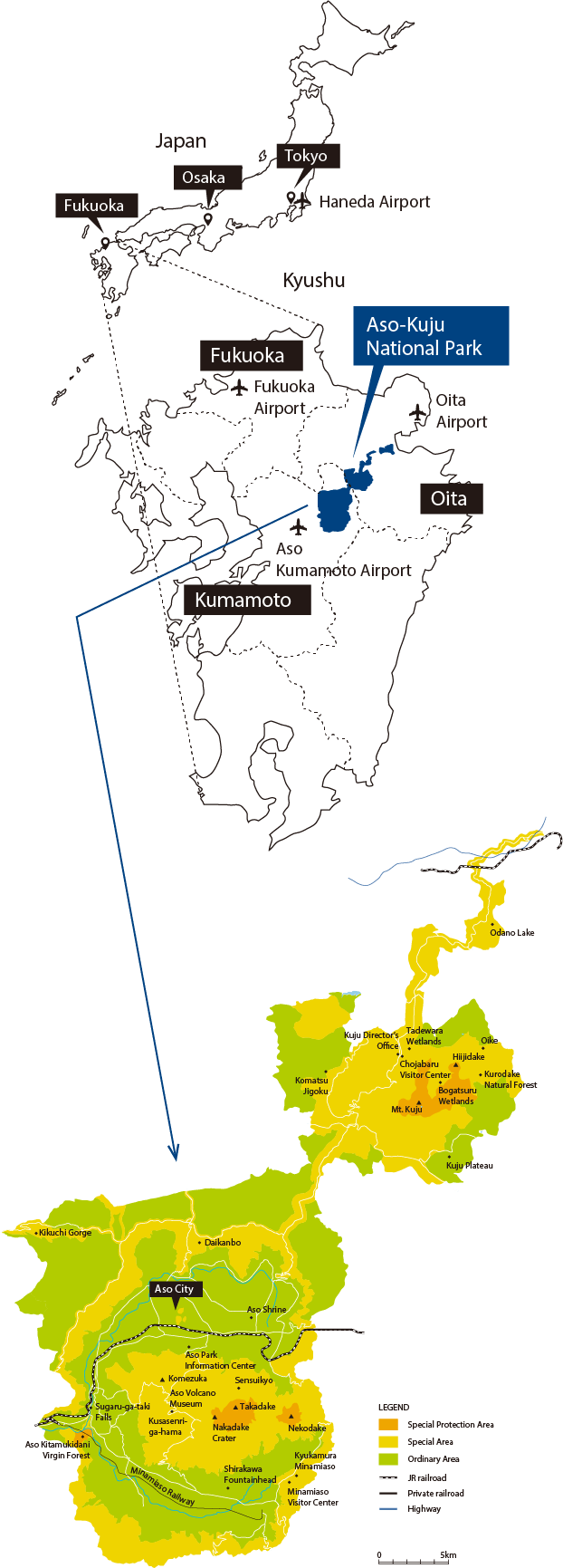
VOLCANO
where the story of Aso-Kuju begins
Geologically speaking, the story of Aso-Kuju begins only very recently, with the present landscape having been formed through a burst of volcanic activity beginning 270,000 years in the past and ending a mere 90,000 years ago. The craters, peaks, plains, and hills formed millennia ago shape the ecology and culture of Aso-Kuju National Park. Let’s take a closer look at how both the landscape and the park itself came to be.
Aso-Kuju stretches across the prefectures of Oita and Kumamoto, and the sharp peaks, spacious plateaus, and abundant springs that the park is famous for were created through a series of eruptions and topological changes tens of thousands of years ago.
The park is centered around the Aso Caldera and the Kuju Mountains and was one of the first of eight national parks designated in Japan in 1934.
There are actually entire towns located inside the boundaries of Aso-Kuju. While nature and the outdoors are important here, the local people and unique culture born out of living side-by-side with an active volcano are also essential aspects of the park.
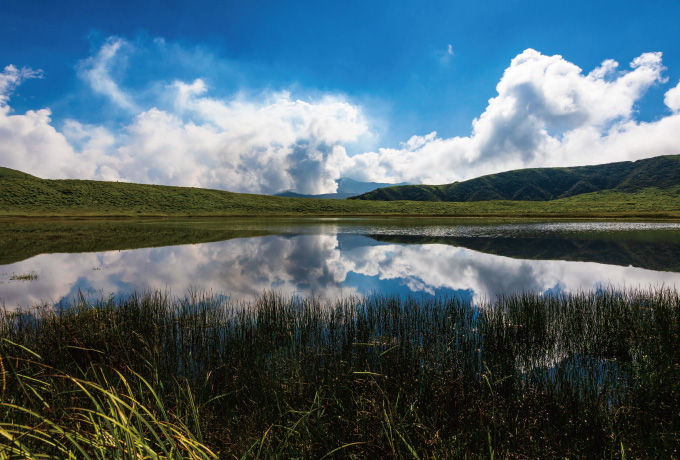
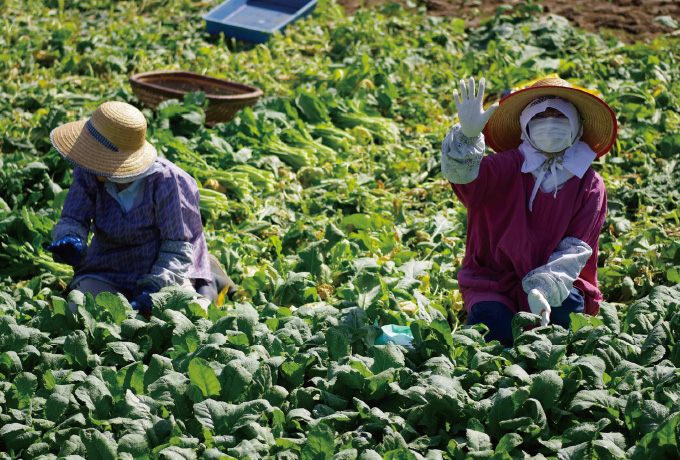
The unique relationship between the geology and local residents of Aso-Kuju is a large part of what gives the park its unique appeal.
Must-visit spots
Here are a few spots that any trip to Aso-Kuju wouldn’t be complete without. Each location tells a different chapter in the story of Aso-Kuju, introducing a new side of the park from which you can start your own adventure.

Aso Crater
This is the crater of the Nakadake peak of Mt. Aso, which is Japan's largest active volcano. Access may be restricted due to wind conditions and volcanic activity. Helicopter rides are available offering up-close views of the inside of the crater and bird’s-eye panoramas of the entire park.
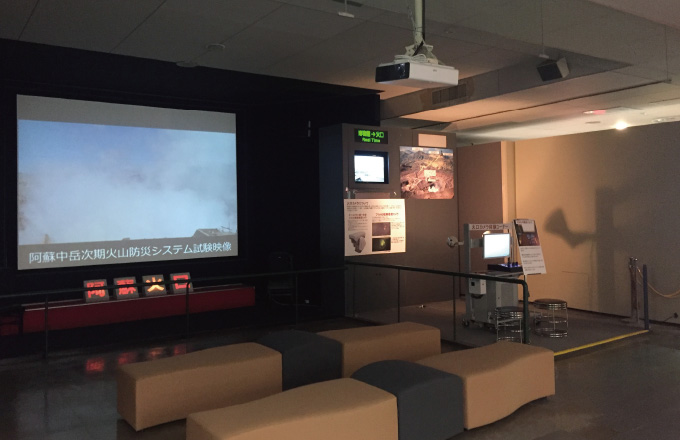
Aso Volcano Museum
Visit this museum first to learn all about how volcanic activity formed the Aso region and how other volcanoes around the world compare. The museum also makes an excellent place to stop if outdoor activities fall victim to inclement weather.
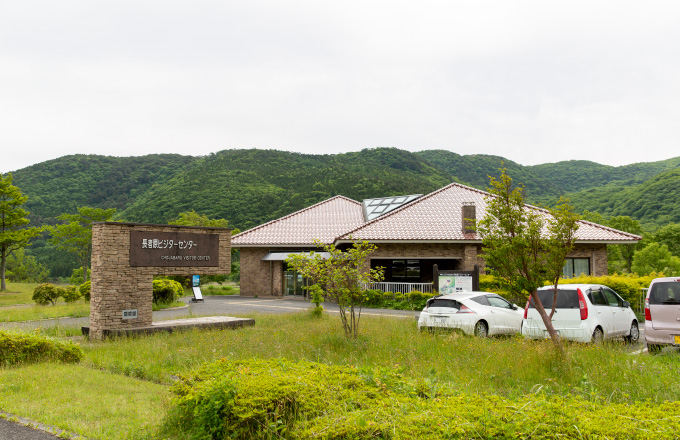
Chojabaru Visitor Center/Tadewara Wetlands
The Chojabaru Visitor Center is also a good first stop on your park visit to learn about Aso-Kuju. The Tadewara Wetlands are located right next to the Visitor Center and offer stunning views of the mountains from the elevated pathways over the wetlands.
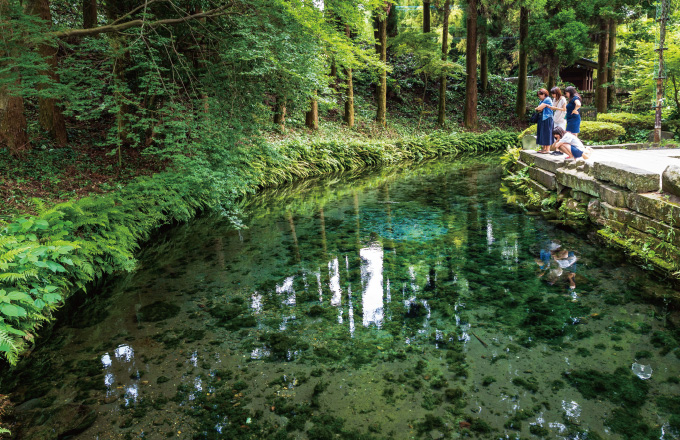
Shirakawa Fountainhead
Pumping out 60 tons of water each minute, this spring feeds into the mighty Shirakawa River that runs through Kumamoto City. The Shirakawa River is one of Kyushu’s most important rivers and irrigates many of Kumamoto’s rice and vegetable farms.
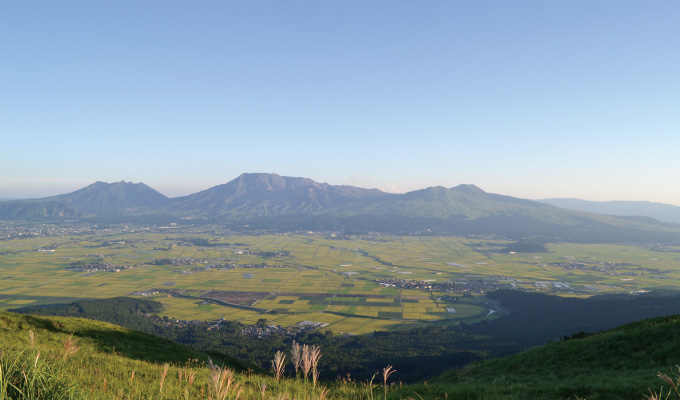
CALDERA
an unlikely place to call home
What is a ‘caldera?’
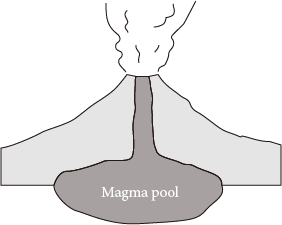
A caldera, meaning ‘cooking pot’ in Spanish, is a depression left in the earth after a volcanic eruption. Pressure builds within the earth until an eruption occurs.

Discharge of magma, ash, and/or gas during an eruption can create an empty chamber underground, which then may collapse under its own weight.

This collapse leaves a ring of mountains around a central depression. Further volcanic activity may occur that creates another volcano within the caldera (as with Aso).
Caldera culture
Measuring 18km east to west and 25km north to south, the Aso Caldera is one of the world's largest and is also home to over 70,000 people. Here are some places where you can see and experience the unique culture that has developed as a result of living at the foot of an active volcano.
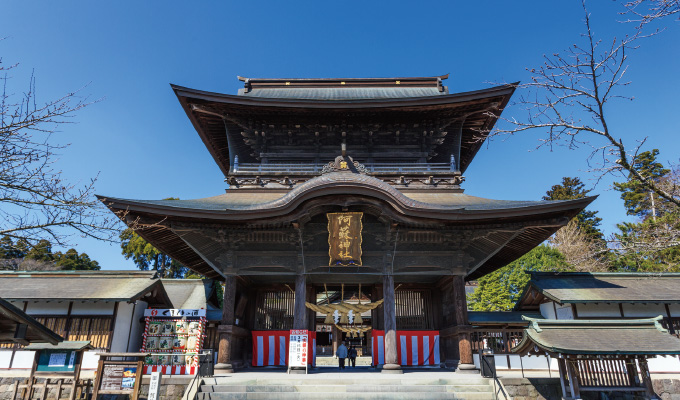
Aso Shrine
One of Japan’s oldest shrines that, in ancient times, was used to worship the volcano itself. Visit during mid-March and you may be able to witness the fire-twirling Hifuri Shinji Festival. Much of the shrine was damaged in the 2016 Kumamoto Earthquakes, but as part of reconstruction, some areas of the shrine not normally visible to the public are on full display.
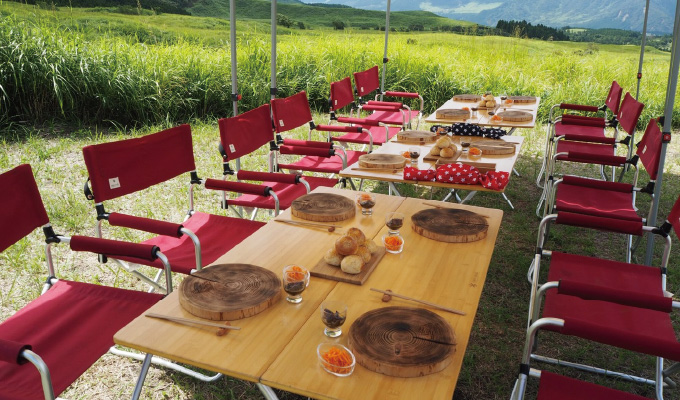
Lunch on the Aso Grasslands
Enjoy a meal featuring locally-raised Akaushi wagyu beef while relaxing among the grasslands of Aso, protected and maintained by the locals for over 1,000 years. The healthy, natural grass of Aso is key to the quality of grass-fed Akaushi beef.
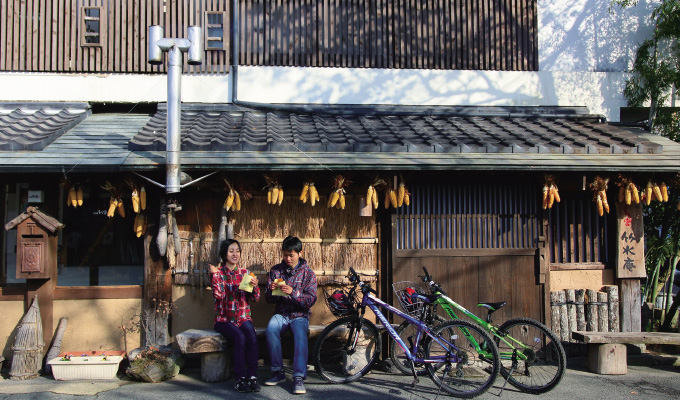
Foodie Cycling Tours
Rent a bicycle to ride and eat your way through Aso’s fantastic food culture, which includes traditional hearth-cooked dengaku, hearty dago-jiru soup, a rice bowl topped with Aso’s famous Akaushi wagyu, and more!
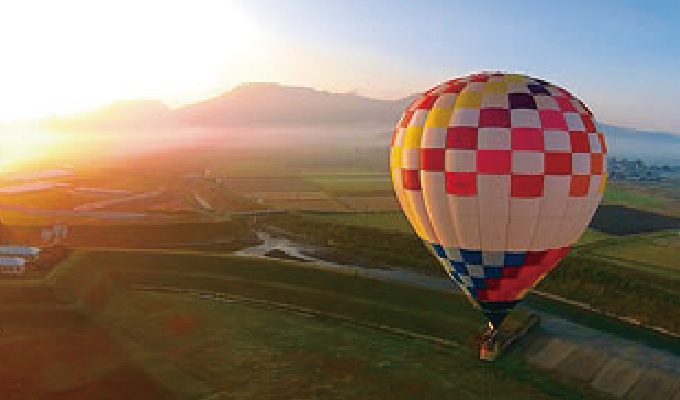
Sunrise Balloon Ride
Take a ride in a hot-air balloon over the quiet countryside and be the first in Aso to see the sun as it peeks over the caldera mountains and wakes up the quiet Aso Valley.

CULTURE
born from fire and water
A scene from the Hifuri Shinji Festival at Aso Shrine, where participants twirl flaming bales of grass to the delight of onlookers.
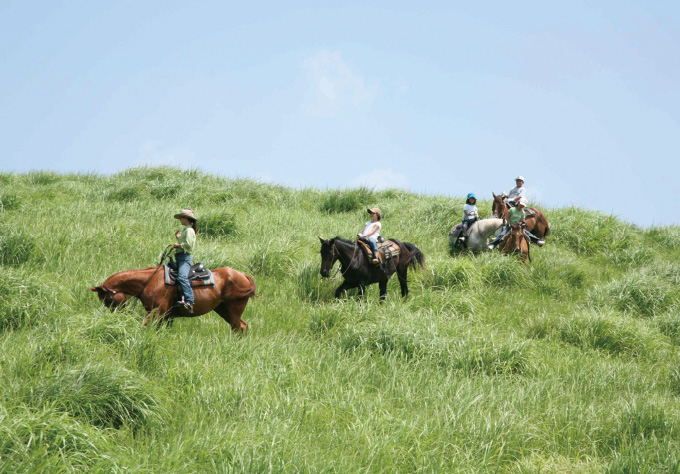
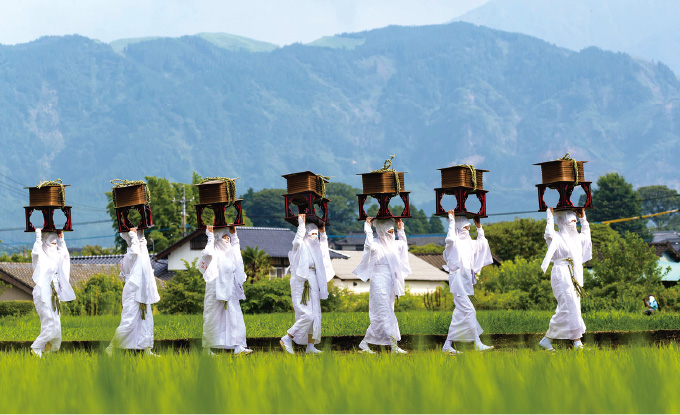
You may think living so close to a volcano invites only risk and danger, but there are actually a great many gifts that the volcanic landscapes of Aso-Kuju bestow upon its inhabitants and visitors, including abundant springs (both hot and cold), unique wildlife, fertile soil, excellent hiking and outdoor activities, and much more.
Aso-Kuju is an outdoor paradise, boasting kilometers of hiking trails, numerous campgrounds, excellent biking routes, thrilling paragliding, relaxing horseback rides, stargazing walks, and so much more. And after a long day of exploring, nothing beats a nice long soak in some of the finest onsen hot springs in Japan.
You’ll probably notice that much of the undeveloped land in Aso-Kuju is grasslands. The secret behind these grasslands is that they are entirely the result of human intervention, the product of over 1,000 years of careful maintenance by the local residents. Every year in spring, the locals perform controlled grass burns called noyaki in order to prevent growth of unwanted shrubs and trees that would take over the grasslands and gradually turn them into unworkable woodlands.
The climate, volcanic topography, noyaki, and varied environments of Aso-Kuju mean the park is absolutely filled with flora and fauna that can only be found here. The springtime cherry blossoms, bright pink rhododendrons of early summer, and copper and auburn leaves of autumn will make for a memorable trip no matter the time of year.
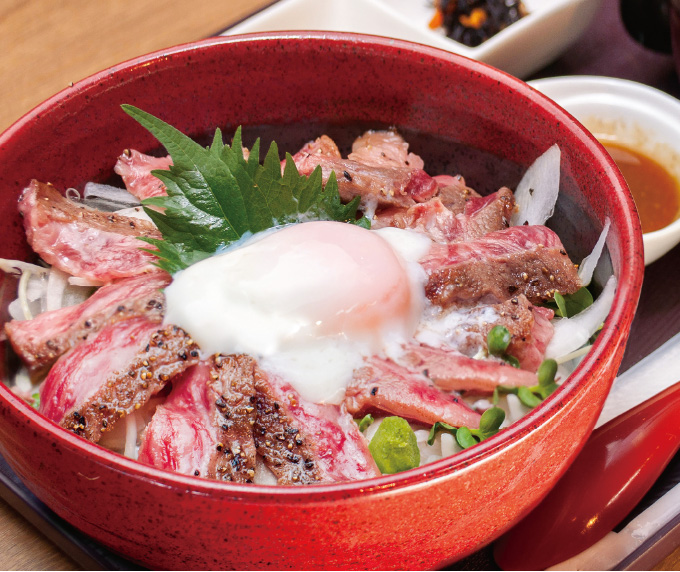
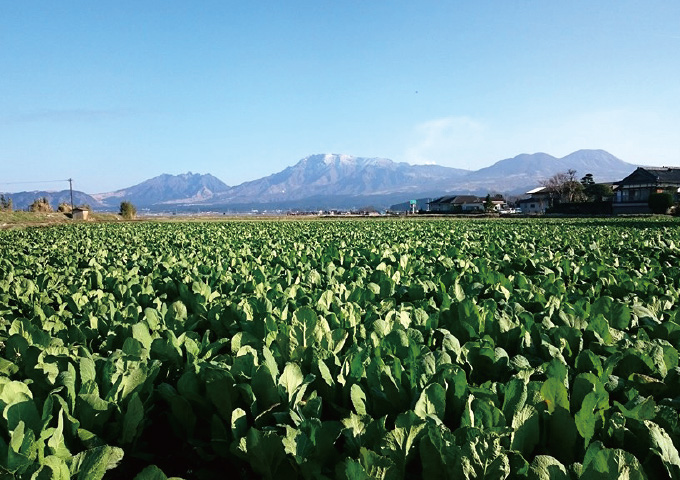
Aso's unique climate and geography is perfect for farming and grazing. Aso's famous Akaushi wagyu served over rice is a popular dish, as is takana-meshi (fried rice with pickled mustard greens).
Natural spots
Aso-Kuju features so many different geological and biological environments, all within the borders of a single park. Here are a few spots where you can get a real sense for the direct relationship that exists between the nature of the area and the local residents.
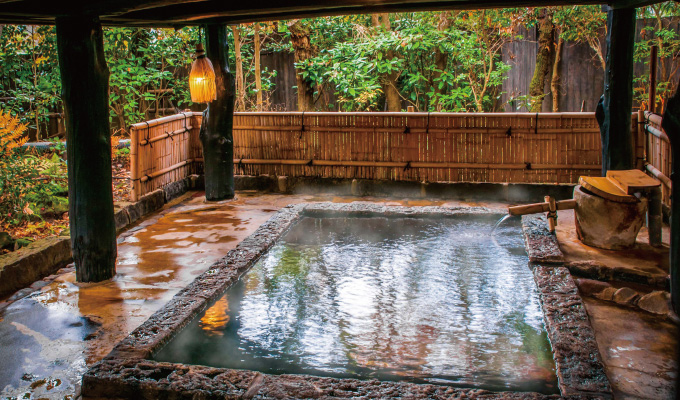
Onsen
Onsen (hot springs) are an important part of Japanese culture and are especially common within the borders of Aso-Kuju. Popular spots include the onsen town of Uchinomaki within Aso City, and Hokkein, an onsen nestled in the Kuju Mountains and situated at the highest elevation of any onsen in Kyushu.
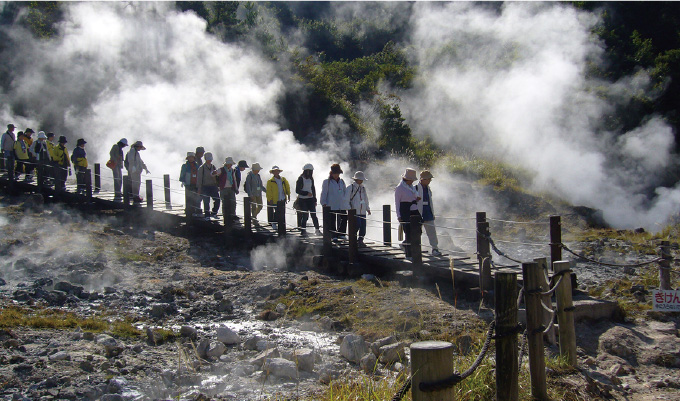
Kuju Komatsu Jigoku Tour
Some hot springs are too hot for bathing but offer an interesting glimpse at the geothermal activity just under the earth’s surface. Komatsu Jigoku is a collection of bubbling hot springs, steaming vents, and roiling mud pots that illustrates the power of earth at work beneath your feet.
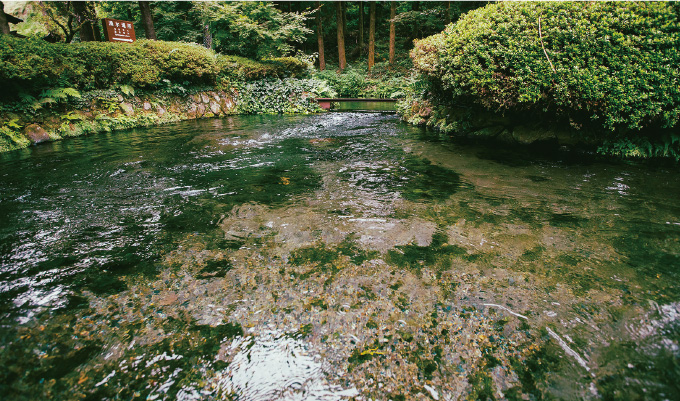
Fresh Spring Tour
Volcanically active areas frequently have an abundance of hot and cold water springs, and Aso-Kuju is no different. You can find dozens of pure cold water springs all throughout the park, and the waters of each spring differ slightly in taste due to different mineral content.
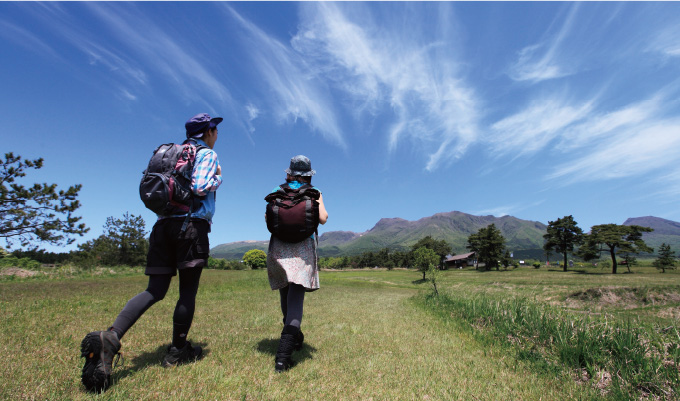
Guided Trekking through the Kuju Mountains
Have an experienced guide take you on one of several courses up, over, and through the Kuju Mountains. Courses range from beginner-level to longer and more difficult advanced-level courses. Your guide will provide you all kinds of interesting info on the history and geography of Aso-Kuju.
About the National Parks of Japan
National Parks in Japan are natural scenic locations that have been selected by the national government to represent the nation of Japan. From Hokkaido in the north to Okinawa in the south, there are a total of 33 National Parks in Japan that welcome a total of over 300 million visitors annually.
Each National Park of Japan features not only breathtaking landscapes, but diverse wildlife and interesting histories and culture. Japanese National Parks are unique from other national park systems in that Japanese National Parks can sometimes include entire towns and cities, letting visitors experience both the great unspoiled outdoors of Japan while also learning about the history and culture of the locals, all in the same park.
About Aso-Kuju National Park
Designated as a National Park of Japan in 1934, Aso-Kuju is one of Japan’s oldest National Parks and is centered around the volcanic formations of the Aso Caldera and Kuju Mountain Range. The park boundaries include all or part of five cities, six towns, and two villages in the prefectures of Kumamoto and Oita and is located in the middle of Kyushu, the southernmost of Japan's four main islands.
The park was heavily affected by the 2016 Kumamoto Earthquakes, but construction is underway to repair and improve road and railway access within and around the park. Due to frequent road construction and road reopenings, please check your travel routes in advance to make sure the roads you intend to use are accessible.
